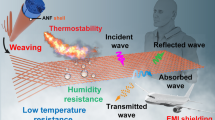Abstract
The mechanical response of materials to an applied force is determined by the inherent microstructure properties of the material.Microcrystals formed during heating and fiber drawing represent inherent flaws, which play a strong role in the mechanical properties as well as the handling ability of optical waveguides, in particular ZBLAN (ZrF4–BaF2–LaF3–AlF3–NaF) fibers. The property of the fiber to flex and bend is useful for handling and positioning the fiber in a desired application. A series of ZBLAN fibers were bent to specific radii of curvature to determine the applied curvature at which fiber fracture occurs. The fibers were first subjected to a tailored temperature arrangement for a designated amount of time to induce varying amounts of crystal formation. The fiber failure was documented and photographed with the aid of optical microscopy and scanning electron microscopy. Fracture mechanics analysis was used to characterize the impact of crystal size on the failure of the ZBLAN fiber. The results of this assessment show the impact of thermal degradation on ZBLAN fibers as well as suggest an optimum fiber drawing take-up reel diameter.
Similar content being viewed by others
References
Harrington, J.A., “Infrared Fiber Optics,” Bass, M., Enoch, J.M., Van Stryland, E.W., and Wolfe, W.L. (eds), Handbook of Optics: Fiber and Integrated Optics, Volume 4, Mc-Graw Hill, New York, pp. 12.1–12.14 (2000).
Workman, G., O’Brien, S.G., and Adcock L., “ZBLAN Microgravity Study,” Final Report Submitted to the National Aeronautics and Space Administration George C. Marshall Space Flight Center (1995).
Wilson, S.J., Gibson, S., Gaukrodger, S., and Scott, M.G., “Observation of Crystallization in Fluorozirconate Glasses,” Materials Science Forum V5: 269–274 (1985).
Macfarlane, D.R., Matecki, M., and Poulain, M., “Crystallization in Fluoride Glasses,” Journal of Non-Crystalline Solids 64: 351–362 (1984).
Torres, A., Maji, A., Ganley, J., Tucker, D., and Starodubov, D., “Increasing the Working Temperature Range of ZBLAN Glass Through Microgravity Processing,” Optical Engineering 53(3): 036103 (2014).
Torres, A., Maji, A., and Ganley, J., “Experimental and Analytical Techniques for Studying ZBLAN Crystallization in Microgravity,” Journal of Experimental Techniques (2014). doi:10.1111/ext.12099.
Hayashi, A., Mitsunaga, Y., and Koga, H., “Optical Fiber Cable Flexibility Design Under Plastic Deformation and Its Evaluation,” Electronics and Communications in Japan, Part 1 72: 94–103 (1989). doi:10.1002/ecja.441072061.
Park, Y., and Yang, J., “Effect of the Microstructure on the Mechanical Properties of a Directionally Solidified Y3Al5O12/Al2O3 Eutectic Fiber,” Journal of Materials Science V36: 5593–5601 (2001).
Anstis G. R., Chantikul P., Lawn B. R., and Marshall D. B., A Critical Evaluation of Indentation Techniques for Measuring Fracture Toughness: I, Direct Crack Measurements, Journal of the American Ceramic Society, V64: 9, 533–538.
Gong, J., Chen, Y., and Li, C., “Statistical Analysis of Fracture Toughness of Soda-Lime Glass Determined by Indentation,” Journal of Non-Crystalline Solids V279: 219–223 (2001).
No¨ tzolda, K., “Temperature Dependent Fracture Toughness of Glass Frit Bonding Layers,” Microsystem Technologies V16(7): 1243–1249 (2010).
Ogmentum Incorporated, URL www.ogmentum.com [accessed August 2014].
Mitachi, S., and Tick, P.A., “Oxygen Effect on Fluoride Glass Crystallization,” Materials Science Forum 67 & 68: 169–180 (1991).
Al-Laham, S., “Stress Intensity Factor and Limit Load Handbook,” British Energy Generation Ltd., EPD/GEN/REP/0316/98, Issue 2, © 1999, pp. AI32-AI37.
Author information
Authors and Affiliations
Corresponding author
Rights and permissions
About this article
Cite this article
Torres, A., Maji, A. & Ganley, J. The Effect of Microcrystals on ZrF4–BaF2–LaF3–AlF3–NaF Glass Fiber Fracture. Exp Tech 40, 765–776 (2016). https://doi.org/10.1007/s40799-016-0077-x
Published:
Issue Date:
DOI: https://doi.org/10.1007/s40799-016-0077-x




